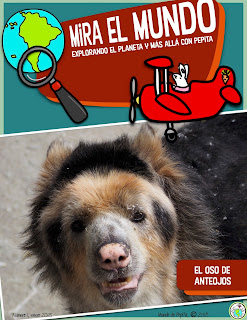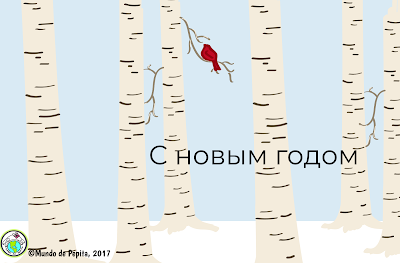HERE ARE SOME IDEAS FOR USING A WILDLIFE DOCUMENTARY in class:
*WATCH A SHORT CLIP rather than the whole thing. You may find that given your time constraints, a portion of a video may be better than trying to show the whole thing. Even a clip of 2-3 minutes can be stretched depending on the activities you do with it.
*FOR MY ELEMENTARY STUDENTS, I typically don't expect them to understand the narration; the language is usually too challenging. However, depending on the clip, I can have them listen for specific words (naturally I preview the clip ahead of time) and instruct them to raise their hands when they hear particular words.
*Q/A: the easiest way to view a wildlife / nature documentary with students is to preview it ahead of time, developing a list of questions you can ask your students, and then as you are watching it together, hit the pause button each time you want to ask a question. I also like to get kids to expand on their answers when possible...so, if I ask ¿Hace frío o calor? and they answer 'Hace frío', I might follow up with '¿Hace mucho frío? (Imagine a documentary of penguins for ex!) or if we are watching a sloth and I ask 'What is the sloth doing?' and the answer is 'climbing', I could then ask 'Is he climbing quickly or slowly?' and so on.
*WATCH THEN SHARE: Much like 'Turn and Talk/Share' the idea behind this activity is to show a short clip of a video, then have kids turn to a partner and share something about what they have seen. For novices, particularly Novice Low, this could be as simple as naming something they've seen, while for students with more proficiency, they could describe using sentences. Or for more advanced students, you could pose a question that elicits an opinion or a statement of position, such as 'Why do you think the people are converting habitat into farmland? or 'Should the government stop the clearing of land in this region?'. Students share their answer/opinion/position with their partner and vice versa.
*WHICH DO YOU LIKE MOST?: At the end of the clip, create a voting chart to practice the sentence 'I like ___ the most'. Write the names of some of the animals shown in the clip/ video as columns, then have students tell which is their favorite/ the one they like the most. Count up the answers at the end and determine the most popular animal from that clip!
NOTE: A couple of things I have learned include the following
-don't show videos of animals hunting or eating other animals to elementary students. Though we all know it's just part of life, it can really upset some children. Better to not use it, or at least not that part of the video.
-another no show is animals fighting or mating. Again, disturbing and weird for little kids. Not something you want them to go home and tell their families about.
INTERESTED IN SEEING HOW THIS CAN LOOK IN YOUR CLASS? Here is a clip of one of my Kindergarten classes last year watching the preview to a Spanish film on Cantábrico
The link to the trailer we watched is here: https://www.youtube.com/watch?v=7I5urHr43o0 and for more nature videos, you can visit my Pinterest board here, where I've saved a number of them, (Be sure to vet first to ascertain appropriate content for your level of students): https://www.pinterest.com/MundodePepita/videos-songs-for-elementary-school-spanish-class/?eq=videos&etslf=NaN
AND DON'T MISS OUR NEW NON FICTION MAGAZINE SUBSCRIPTION! The first edition (Jan-Apr 2018) focuses on endangered animals of South America-each issue comes with a series of Youtube links to reinforce learning! Click here to subscribe!









